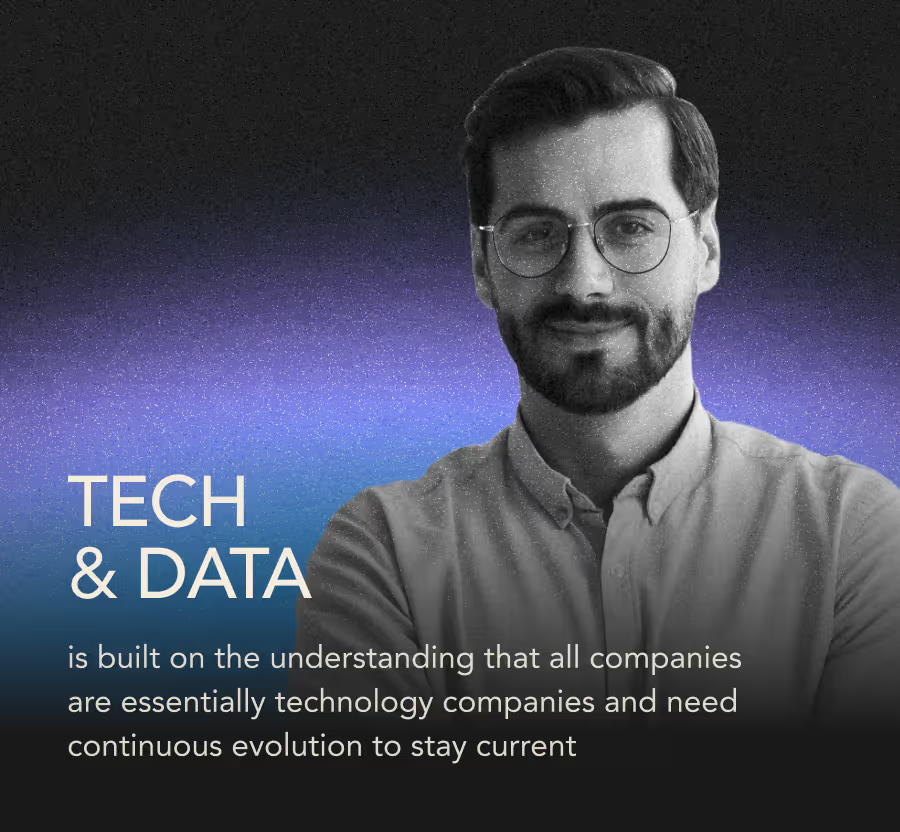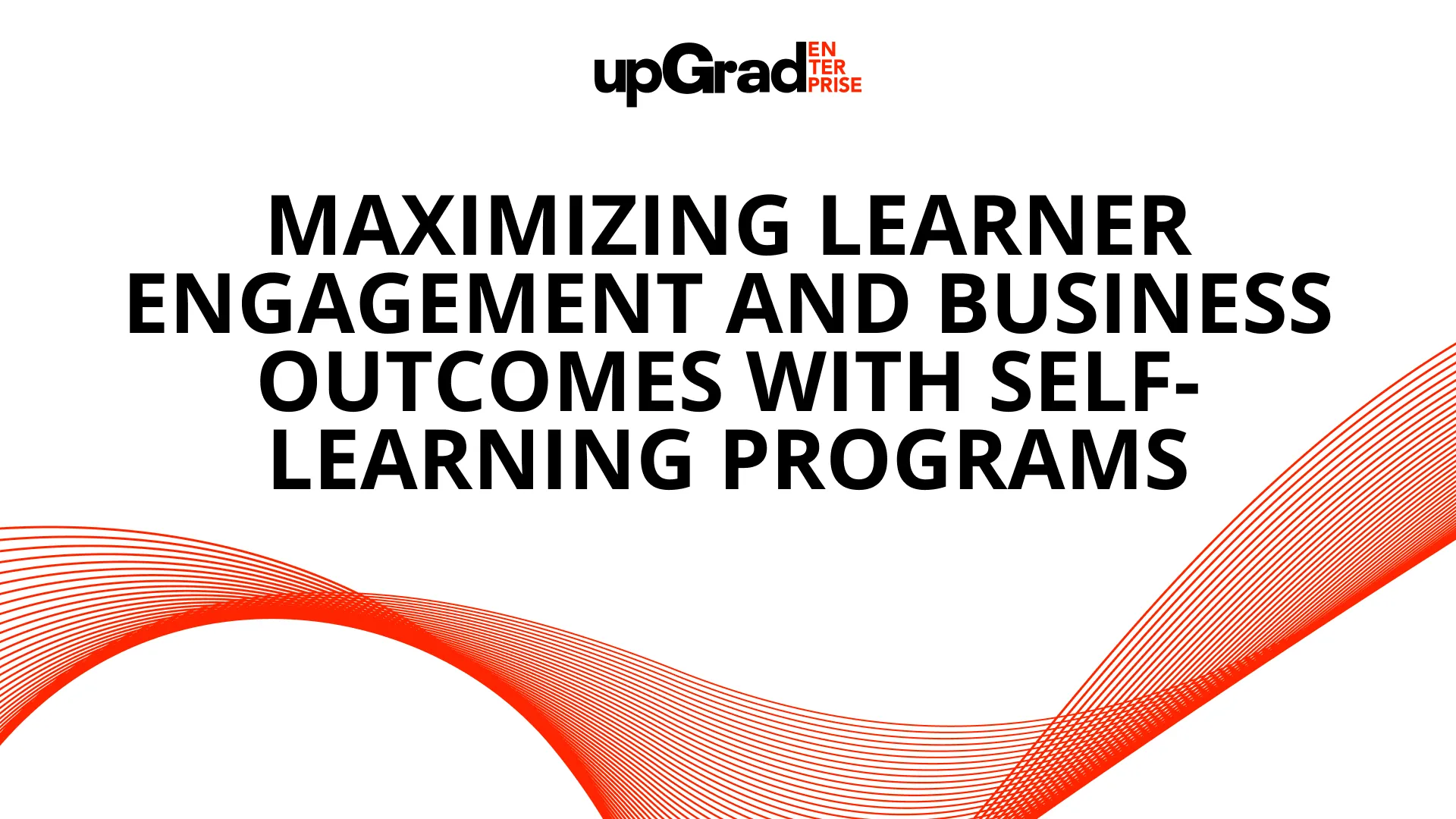Self-learning programs are changing how organizations train and develop their people. These flexible, on-demand models give employees control over their learning—while helping companies save time, reduce costs, and improve performance.
But to be effective, self-learning must do more than just deliver content. It must drive self-learning engagement—keeping learners motivated, involved, and focused on real outcomes.
In this article, we’ll explore how L&D teams can boost engagement in self-learning programs, connect learning to business goals, and overcome common challenges. You’ll find strategies and tools to help you build programs that truly work—for both learners and the business.
The business case for self-learning engagement
Self-learning is more than a convenience—it’s a strategic advantage. When designed for engagement, self-learning programs can lead to stronger performance, faster upskilling, and better talent retention.
Why self-learning engagement matters to business
- Boosts productivity and performance
Engaged learners are more likely to apply new skills on the job. A LinkedIn Learning report found that highly engaged employees are 47% more likely to say their learning helped them advance in their career.
- Saves time and reduces training costs
Self-learning reduces the need for in-person sessions, travel, and scheduling. For example, IBM cut training costs by 40% after shifting to self-paced eLearning.
- Improves employee satisfaction and retention
Employees value growth opportunities. Offering flexible learning options improves job satisfaction and helps reduce turnover.
Proving ROI to stakeholders
To get leadership buy-in, L&D teams must show how self-learning engagement connects to business goals.
- Track key metrics: course completions, engagement scores, performance impact
- Align learning objectives with business priorities (e.g. onboarding speed, sales performance)
- Share success stories that show measurable outcomes
Key drivers of self-learning engagement
Creating a self-learning program is only half the challenge. To succeed, it must engage learners—keeping them motivated, focused, and eager to grow. Here are the core elements that drive strong self-learning engagement.
Autonomy and motivation
- Giving learners control over what, when, and how they learn increases ownership and motivation.
- Based on self-determination theory, autonomy boosts intrinsic motivation—leading to deeper engagement and better outcomes.
- Example: Google’s “20% time” policy empowers employees to explore learning and innovation on their own terms.
Personalized learning experiences
- Adaptive learning platforms adjust content based on each learner’s pace, role, and skill level.
- This tailored approach makes learning more relevant and engaging.
- Example tools: Docebo, Degreed, and EdCast offer AI-driven personalization that increases learner engagement.
Microlearning and modular content
- Short, focused lessons help learners stay engaged and retain information.
- Ideal for busy professionals who need on-demand, just-in-time training.
- Example: Salesforce uses microlearning in its Trailhead platform to upskill employees and partners in bite-sized modules.
Gamification and social interaction
- Adding elements like points, badges, and leaderboards increases participation and motivation.
- Social learning features—like peer discussion, feedback, and collaboration—boost accountability and connection.
- Example tools: Kahoot for gamified quizzes; Slack or MS Teams for peer learning channels.
Overcoming challenges in self-learning programs
Even the best self-learning programs can face common roadblocks—like low completion rates, learner isolation, or outdated content. To keep learners engaged and ensure real impact, these challenges need to be addressed early and strategically.
Combating learner isolation and drop-off
- Without structure or support, learners can lose momentum or feel disconnected.
- Solutions:
- Build online learning communities through Slack, Teams, or forums.
- Create peer cohorts or learning groups for accountability.
- Add mentorship or coaching layers to provide human support.
Keeping content relevant and engaging
- Outdated or generic content quickly leads to disengagement.
- Solutions:
- Use content curation tools to keep materials fresh and aligned to skills needs.
- Gather learner feedback regularly to improve content quality.
- Mix formats—videos, quizzes, simulations—to suit different learning styles.
Balancing flexibility with structure
- Too much freedom can lead to aimless learning; too much structure can reduce autonomy.
- Solutions:
- Offer guided learning paths with milestones or checkpoints.
- Provide recommended content based on roles, goals, or performance data.
- Set soft deadlines or progress reminders to keep learners on track.
Strategic frameworks for implementing self-learning programs
To turn self-learning into a business asset, L&D teams need more than content—they need a clear, scalable framework that supports engagement, accountability, and measurable outcomes.
The engagement flywheel model
A strategic approach to self-learning engagement starts with a repeatable cycle that drives momentum over time.
- Discover – Help learners identify relevant skills and resources.
- Engage – Use interactive, personalized content to spark interest.
- Apply – Enable learners to use new skills in real work scenarios.
- Reflect – Encourage self-assessment and feedback loops.
- Share – Foster peer learning through collaboration and discussion.
- Example: A sales enablement program using this model could guide reps through role-based learning, followed by real-world application and peer coaching.
Building a culture of continuous learning
Engagement improves when self-learning is part of the company culture—not just an optional resource.
- Encourage leaders to promote and participate in learning.
- Recognize and reward learning achievements (badges, internal shoutouts).
- Run internal campaigns to spotlight success stories and progress.
Tracking and optimizing engagement
Data is essential for refining your approach and proving value to stakeholders.
- Use dashboards to monitor progress, completion rates, and skill growth.
- Segment reports by role or department to identify learning gaps.
- Tools like Watershed and Learning Locker help track learning behaviors across platforms.
Conclusion: the future of self-learning engagement
Self-learning is no longer a nice-to-have—it’s a strategic lever for workforce development. When built with engagement in mind, self-learning programs can drive real business outcomes: faster upskilling, higher performance, and stronger retention.
To get there, L&D teams must focus on what truly keeps learners involved: autonomy, relevance, personalization, and support. With the right tools and frameworks, it’s possible to create learning experiences that are flexible, scalable, and deeply effective.
Key takeaways
- Self-learning engagement improves business performance when aligned with learner needs and company goals.
- Personalization, microlearning, and gamification are proven strategies for boosting engagement.
- Leading companies are already seeing ROI from well-designed self-learning programs.
Now is the time to audit your current learning strategy, identify gaps in engagement, and build a future-ready model that empowers your people to grow—on their own terms and at their own pace.
FAQs
1. What is self-learning engagement?
Self-learning engagement is the level of active participation, motivation, and follow-through a learner demonstrates in a self-directed learning program. It’s influenced by how relevant, flexible, and personalized the learning experience is, and plays a critical role in knowledge retention and skill application.
2. How does self-learning engagement impact business outcomes?
When learners are engaged, they absorb and apply knowledge more effectively, which leads to improved job performance, faster upskilling, and higher employee satisfaction. This directly supports business goals by increasing productivity, reducing turnover, and lowering training costs.
3. What are the best ways to increase engagement in self-learning programs?
To boost self-learning engagement, organizations can offer personalized learning paths, use microlearning formats, incorporate gamification elements like points and badges, and build social features such as peer groups, discussion boards, or mentor support.









